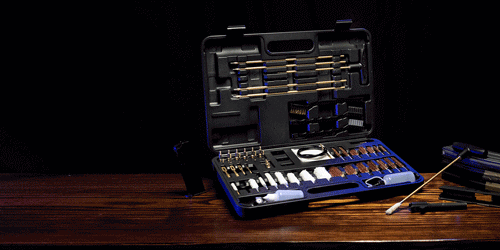Foreword
Hunting in winter can be a thrilling experience, with the crisp air, peaceful surroundings, and fewer people in the woods. However, staying warm in cold conditions is crucial for both comfort and safety. Whether you're a seasoned hunter or a beginner, understanding how to dress and prepare for winter hunting is essential to make sure you stay safe and enjoy your time outdoors. In this article, we’ll cover some key strategies for staying warm during a winter hunt.

Layering: The Key to Warmth
When it comes to winter hunting, layering your clothing is one of the best strategies for regulating your body temperature. The right layers trap warmth, wick away sweat, and allow for easy adjustment if you get too hot or cold. Here’s a basic guide to layering for winter hunts:
Base Layer: This layer is designed to wick moisture away from your skin. Look for moisture-wicking fabrics such as merino wool or synthetic materials. Avoid cotton, as it traps moisture and will leave you cold once it gets wet. A good base layer will help keep your skin dry and prevent the chill that comes from perspiration.
Mid Layer: The mid-layer is responsible for insulating your body. Fleece, down, or synthetic insulation jackets work well here, as they trap heat close to your body. This layer is key to staying warm without being bulky. Opt for a mid-layer that offers freedom of movement and is easy to add or remove based on your activity level.
Outer Layer: The outer layer should protect you from the wind, rain, or snow. A waterproof, windproof jacket is essential, as it shields you from the elements. Look for a durable material such as Gore-Tex or other high-performance fabrics that are both breathable and waterproof.

Focus on Your Extremities
Your hands, feet, and head are the most vulnerable parts of your body when it comes to cold weather. To stay warm, pay special attention to these extremities:
Hands: Choose a pair of hunting gloves that provide both dexterity and insulation. Layering gloves can be effective, such as a thin liner with an insulated glove over it. If you plan to be inactive for long periods, consider hand warmers, which can be placed in your gloves for extra heat.
Feet: Insulated, waterproof boots are a must for winter hunts. Make sure they are comfortable and provide good traction. You can add a layer of thermal socks, such as wool or synthetic material, to keep your feet warm and dry. Never wear socks that are too tight, as this restricts circulation and can make your feet colder. Don’t forget foot warmers, which can be a lifesaver on long hunts.
Head: A lot of body heat is lost through the head, so a good hat or balaclava is crucial. Consider a thermal beanie or an insulated hood, especially if you'll be sitting still for long periods. If you're hunting in extreme cold, consider wearing a face mask or neck gaiter to protect your face from frostbite.
Stay Active, But Not Too Active
While it’s important to keep moving to stay warm, overexerting yourself can lead to sweating, which will chill you once you stop moving. Try to find a balance between staying active and keeping your body temperature regulated.
Hiking or Stalking: During active parts of the hunt, keep a steady pace. Stop for short breaks when you need to, but avoid sitting down for too long, as it can make you feel colder. Keep your body moving by walking, climbing, or doing low-intensity tasks that help keep your blood circulating.
Sitting or Waiting: If you're waiting for game, consider using a portable, insulated hunting seat pad to help keep your legs and backside warm. Try not to sit directly on the ground, which can draw heat from your body. If you have to remain still, make sure to shift positions every so often to improve circulation.

Stay Hydrated and Well-Fueled
When hunting in cold weather, it’s easy to forget the importance of staying hydrated and properly fueled. Your body requires energy to stay warm, so don’t skip meals, and make sure to drink enough water throughout the day.
Hydration: In cold weather, you may not feel thirsty, but dehydration can make you feel colder. Carry a thermos of warm liquid, such as tea or soup, to help stay hydrated while also providing warmth. Avoid alcohol, as it can impair circulation and increase heat loss.
Food: Eating high-energy snacks, such as nuts, granola bars, or jerky, can provide sustained energy throughout the day. Hot meals, like soup or stew, are also great for keeping your internal temperature up.
Use Heated Gear
Heated gear can be a game-changer for staying warm during a winter hunt. Many hunters swear by heated gloves, vests, or insoles that can help regulate body temperature. Battery-powered heated gear can provide targeted warmth in the most critical areas.
Heated Vests or Jackets: These garments have heating elements built into them that can be adjusted depending on the temperature. Wearing a heated vest or jacket underneath your regular outer layers can provide extra warmth without making you bulky.
Heated Insoles or Socks: If you suffer from cold feet, consider investing in heated insoles or socks. These items are powered by batteries and can keep your feet warm even in freezing conditions.

Know Your Environment
Before heading out for your winter hunt, it's important to familiarize yourself with the weather conditions and environment. Knowing how cold it will be, how much snow or rain to expect, and the terrain you'll be navigating will help you make the right choices in terms of gear and preparation.
Weather Forecast: Always check the weather forecast before you leave for your hunt. Make sure you’re prepared for any sudden changes in temperature, snow, or wind. If a storm is expected, it may be best to postpone your hunt or bring extra gear just in case.
Terrain Awareness: The type of terrain you’ll be hunting in will affect your warmth. If you’re in the woods, dense trees can offer shelter from the wind, whereas open fields or high-altitude areas may expose you to harsher conditions. Plan your hunting routes accordingly and be prepared to take cover if needed.
Know the Signs of Hypothermia and Frostbite
In extremely cold conditions, it’s essential to watch out for the early signs of hypothermia and frostbite. These conditions can develop quickly, especially if you’re standing still for long periods.
Hypothermia: Symptoms include shivering, confusion, dizziness, and slurred speech. If you experience any of these, take immediate action to warm up and seek shelter.
Frostbite: Frostbite usually affects exposed skin and extremities. If you notice numbness, tingling, or pale skin, it’s important to rewarm the affected area slowly and avoid direct heat sources like open flames.

Conclusion: Stay Warm, Stay Safe
Winter hunting can be incredibly rewarding if you’re well-prepared to handle the cold. By layering your clothing, focusing on your extremities, staying active, and using heated gear, you can ensure that your winter hunting trip is both comfortable and safe. Always be mindful of the weather and take breaks to check your body’s temperature and hydration levels. With the right gear and preparation, you can enjoy the beauty and excitement of winter hunting while staying warm and protected from the elements.





